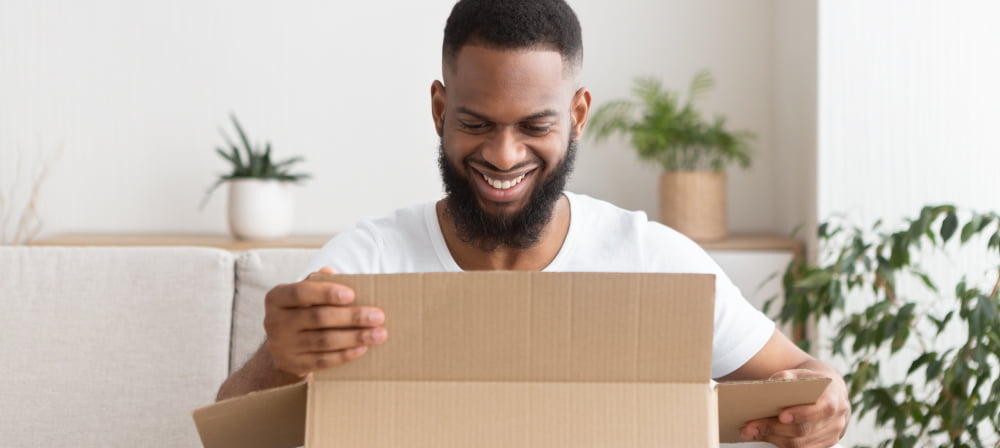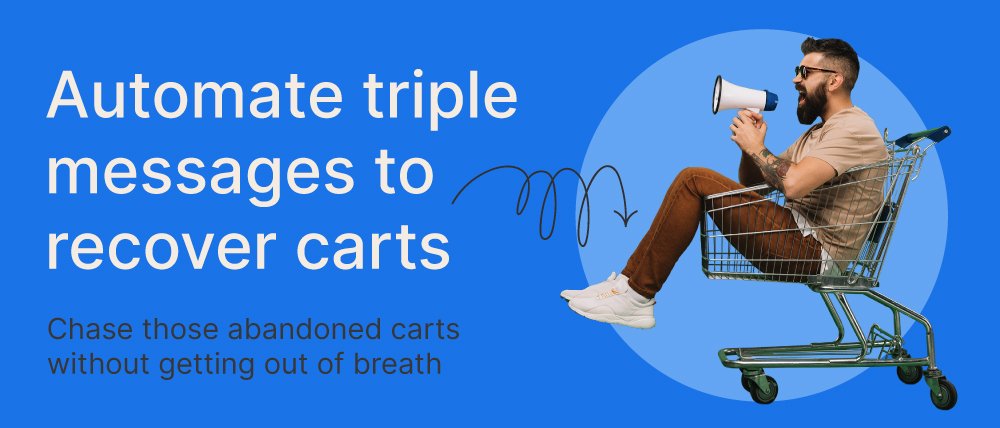The key to recovering lost sales at every stage of customer contact
You’re pouring your heart into your Shopify store: making sure the design is the best possible, that products are clearly labeled and ordered, and that customers can easily get in touch with you so you can recover lost sales before the buyer even drops off the radar.
Is that enough? For your first sales, this is a great start. Plus, you should always revisit style, organization, and experience to improve as you learn more about ecommerce. But these are not the only steps store owners need to take in order to avoid shopping cart abandonment or disengaged customers, both of which lead to lost sales.
Store owners need to start recovering lost sales before they’re even lost.
What does this mean? At every stage of a purchase, your store should be present. Shoppers can lose interest at any time, so you need to be drawing them in consistently.
1. Top-of-mind awareness
The work you do to stay top-of-mind for prospects, known as TOMA, can feel like a thankless task. You need to be in the public eye, sharing, adding value, and entertaining at all times, so that customers think of you next time they need something.
Another frustrating point about TOMA is that it is hard to measure effectiveness. While you can measure engagement, and people responding to your emails, it is not always easy to draw a straight line between someone seeing your post on TikTok, and them buying from your store.
That said, measurable or not, we know TOMA is necessary, exemplified by the birth of Shops on Instagram and the fact that 60% of social media users discover products through Instagram.
So, how can you excel at this first stage of customer contact? My co-founder, our CEO, wrote that you can start by building short-form content and getting proficient with social media.
2. Timely marketing
When you have a sale, or your product is a perfect gift for an upcoming holiday, you should be sending out email marketing, SMS marketing, and even doing personalized outreach when possible.
Other triggers for a timely marketing email might include seasonal changes, for example when a clothing store gets in a new collection. Perhaps you make woolen goods, so you should target your holiday marketing to the correct hemisphere at the right time: when temperatures start to drop.
3. Decision-stage support
Ecommerce experts talk at length about the importance of customer experience for online shopping. This becomes critical when customers are resolving doubts before purchase.
Think back to the last time you were unsure about a purchase. You probably checked the returns policy. You probably also referred in more detail to sizing charts, or went to measure the space in your home for which you’re buying… Consider the information you would want available ahead of a purchase, and make that easy to find on your site.
Many excellent online stores have chat boxes on their website, though its absence isn’t a deal breaker for shoppers if they can find information on their own. What’s even more important is an easy-to-navigate FAQ page.

4. Encourage second purchases
Reminding customers about other products in your store that might be useful, based on their first order, can impact how likely a customer is to come back,” Reynier Matos told me in a recent interview.
“What most damages conversion is the absence of communication. Customers want to understand how your products solve their needs.” You can follow Matos’ advice with social media too, uploading explainer videos to YouTube, but this is a more passive approach. Once someone has bought from you once, they have seen your quality and know whether they want to buy again, so you can be direct in communications.
Online store owners can build loyalists by suggesting products that customers might like. You can do this manually, if you are small and know your customers very well. You can also automate the incentivization of second purchases. You only need to activate Aument’s toolbox on your Shopify store and click on “encourage second purchases.”
5. Draw cart abandoners back
KEY to survival as an ecommerce and recovering lost sales, is the action of reminding shoppers to come back to your site. The phenomena of visiting an online store for leisure, adding items to our carts, and then abandoning the site, is so well known that it is a meme:

What can you do about this? Admittedly, some of those shoppers are only visiting your site for entertainment. Some, however, were genuinely interested in your wares. A simple nudge might be all they need to head to checkout!
Noone is doing this manually anymore, so you likely use Shopify’s cart recovery email action or another automation tool. But how can you know you’re using the best cart recovery emails or timing? Here’s our winning formula for the best cart recovery emails, and a copy+pasteable example you’re free to use.
6. Play the long-game
Thought you’d finished, just because they didn’t check out? There’s still so much you can do!
On top of continuing to stay relevant and seen through your social media presence, you can send multiple follow-ups to one-time purchasers and cart abandoners.
If your email nudge didn’t work, wait a few days and send an SMS. If an SMS doesn’t work, you could DM the customer an invite to your next online sale. In the spirit of never giving up, Aument allows stores to send 3 cart recovery emails or SMS reminders. This way, your online store stays present and increases the probability of success.

Now that you know strategies to recover lost sales at 6 stages of customer contact, you can start bringing customers back to your Shopify store, and building a long-term, loyal following.
I’d love to hear from you on LinkedIn, or drop my team a line on Instagram if you employ any of these techniques!







